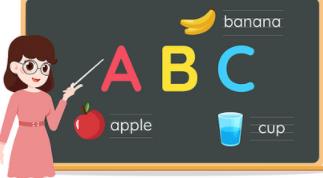- 第1讲——冠词
- 第2讲——名词的数
- 第3讲——名词辨析
- 第4讲——地点介词
- 第5讲——介词短语辨析
- 第6讲——方式介词与原因介词
- 第7讲——动词及动词辨析
- 第8讲——情态动词(1)
- 第9讲——情态动词(2)
- 第10讲——使役动词
- 第11讲——感官动词
- 第12讲——实义动词
- 第13讲——瞬间动词和延续性动词
- 第14讲——被动语态
- 第15讲——一般现在时
- 第16讲——现在进行时
- 第17讲——一般过去时
- 第18讲——一般将来时
- 第19讲——现在完成时
- 第20讲——过去进行时
- 第21讲——过去完成时
- 第22讲——过去将来时
- 第23讲——主将从现
- 第24讲——基数词
- 第25讲——序数词
- 第26讲——倍数分数百分数
- 第27讲——人称代词
- 第28讲——物主代词
- 第29讲——指示代词
- 第30讲——不定代词(1)
- 第31讲——不定代词(2)
- 第32讲——不定代词(3)
- 第33讲——it 的用法
- 第34讲——反身代词
- 第35讲——相互代词
- 第36讲——形容词
- 第37讲——副词
- 第38讲——形容词副词的比较级
- 第39讲——形容词副词的最高级
- 第40讲——形容词副词的原级
- 第41讲——形容词副词(总结)
- 第42讲非谓语动词——不定式
- 第43讲非谓语动词——动名词
- 第44讲非谓语动词——分词
- 第45讲——句子成分
- 第46讲——句子的分类
- 第47讲主谓一致——语法一致
- 第48讲主谓一致——意义一致
- 第49讲主谓一致——就近原则
- 第50讲——虚拟语气
- 第51讲——there be 句型
- 第52讲——直接引语和间接引语
- 第53讲——感叹句
- 第54讲——强调句
- 第55讲——倒装句
- 第56讲——祈使句
- 第57讲——一般疑问句
- 第58讲——特殊疑问句
- 第59讲——选择疑问句
- 第60讲——反义疑问句
- 第61讲——肯定句和否定句
- 第62讲——限制性定语从句
- 第63讲——非限制性定语从句
- 第64讲——时间状语从句
- 第65讲——地点状语从句
- 第66讲——原因状语从句
- 第67讲——条件状语从句
- 第68讲——目的状语从句
- 第69讲——结果状语从句
- 第70讲——让步状语从句
- 第71讲——方式状语从句
过去进行时实中考英语八大必考时态之一,必须要掌握。大家可以对比现在进行时对其进行学习。以下是过去进行时必须要掌握的全部内容,好好学哟!
一. 定义
过去进行时,是表示过去某个时刻或时间段正在进行的事情或动作。
二. 结构
过去进行时谓语动词结构:was/were +doing (现在分词)
三. 用法
1. 过去进行时表示过去某段时间内持续进行的动作或者事情。
常用的时间状语this morning, the whole morning, all day yesterday, from nine to ten last evening, when, while等。例如:
We were watching TV from seven to nine last night.
昨天晚上七点到九点的时候我们在看电视。
What was he researching all day last Sunday?
上周日他一整天都在研究什么?
My brother fell and hurt himself while he was riding his bicycle.
我哥哥骑自行车的时候从车上摔下来,受伤了。
It was raining when they left the station.
他们离开车站的时候天正在下雨。
When I got to the top of the mountain, the sun was shining.
当我到达山顶的时候,阳光灿烂。
2. 过去进行时可以表示在过去某个时间点发生的事情。
时间点可以用介词短语、副词或从句来表示。例如:
What was she doing at nine o'clock yesterday?
昨天晚上九点她在做什么?(介词短语表示时间点)
She was doing her homework then.
那个时候她正在写作业。(副词表示时间点)
When I saw him he was decorating his room.
当我看见他的时候他正在装饰房间。(when从句表示时间点)
3. 在复合句中,如果主要动作和背景动作都是延续的或同时发生的,那么主从句的动词都可用过去进行时。
When he was waiting for the bus, he was reading a newspaper.
他边等车边看报。(两个动作都是延续的)
He was cleaning his car while I was cooking.
他擦车时我在做饭。(两个动作同时进行)
【典型例题】
1) Mary ___ a dress when she cut her finger.
A. made
B. is making
C. was making
D. makes
答案C. 割伤手指是已发生的事情,应用过去时。同时,when表时间的同时性,“玛丽在做衣服时”提供事情发生的背景,因此用过去进行时。
2) As she ___ the newspaper, Granny ___ asleep.
A. read; was falling
B. was reading; fell
C. was reading; was falling
D. read;fell
答案B.句中的as = when, while,意为"当……之时"。描述一件事发生的背景时,用过去进行;一个长动作发生的时候,另一个短动作发生。句意为 "在她看报纸时,奶奶睡着了。"句中的 fell (fall的过去时),是系动词,后跟形容词,如:fall sick。
四. 过去进行时和一般过去时的区别
1. 一般过去时叙述旧事,过去进行时描述背景。
2. 一般过去时表示行为的“整体”和存在的状态,过去进行时表某一行为的“片断”。
I read the book yesterday. (已读完,表整个“读”)
I was reading the book at that time. (未读完,“读”的片段)
3. 过去的一段持续时间状语多与过去进行时连用。
It was raining all night.(优先用was raining ,rained 为持续动词,故也可使用)
He was writing a letter the whole of afternoon. (短暂动词与持续时间连用,表反复,连续发生,不可用一般过去时)
五. 注意
英语中有四类动词一般不用进行时(不用现在进行时和过去进行时)。
1. 表心理状态、情感的动词
如love ,hate ,like ,care ,respect ,please ,prefer ,know 等,若用进行时则词意改变。
I’m forgetting it . (=beginning to forget )
2. 表存在、状态的动词
如appear ,exist ,lie ,remain ,stand ,seem等。
3. 表感官的动词
如see ,hear ,feel ,smell ,sound ,taste等。
4. 表非延续性的动词
如accept ,allow ,admit ,decide ,end ,refuse ,permit ,promise等。
现在进行时的基本结构
图片
肯定式:am/is/are+doing(现在分词)
否定式:am/is/are not +doing(现在分词)
一般疑问式:Am/Is/Are + 主语 +doing(现在分词)+ 其他
特殊疑问式:特殊疑问词+一般疑问式
They’re having a meeting now. 他们现在正在开会。
They aren't having a meeting now. 他们现在没有在开会。
Are they having a meeting now? 他们现在正在开会吗?
What are they doing now? 他们现在正在做什么?
现在进行时的基本用法
图片
1. 表示此时此刻正在发生的事情。常与now,at the moment,look,listen等词连用。
The little boy is watching TV now. 这个小男孩现在正在看电视。
Listen!She is playing the guitar in the next room. 听!她正在隔壁房间弹吉他。
2. 表示现阶段一直在进行着或是重复发生着的动作,不强调此时此刻正在做。常与表示时间段的时间状语连用。
I am studying computer this term. 这个学期我一直在学习计算机。
3. 表示说话人褒义或贬义的情感色彩,如赞许、批评、喜欢、厌恶等。此时常与alway、often等频度副词连用。
He is always thinking of others , not of himself. 他总是为他人着想,而不为自己。(表示赞许)
One of my roommates is often leaving things about. 我的一个室友经常乱扔东西。(表示不满)
4. 表示在近期按计划或安排要发生的动作。(现在进行时表示一般将来的含义。)
① 瞬时动词的进行时在任何情况下都表示将来含义。这些动词包括go , come , leave,arrive , return等。
I am leaving.
我将要离开了。
I am leaving tomorrow.
我将会明天离开。
② 持续动词的进行时,只有在有将来时间状语或将来语境的情况下才可以表示将来含义。
An American professor is giving a lecture this afternoon.
今天下午一位美国教授将要作报告。(将来含义)
An American professor is giving a lecture.
一个美国教授正在作报告。(进行含义)
现在分词(doing)的变化规则
图片
1. 一般在情况下,在动词词尾加-ing。
go——going
play——playing
know——knowing
2. 以不发音的字母e结尾动词,先去e再加-ing。
make——making
arrive——arriving
come——coming
3. 以重读闭音节结尾,且动词词尾只有一个辅音字母时,先双写这个辅音字母,再加-ing。
run——running
stop——stopping
swim——swimming
run——running
put——putting
sit——sitting
begin——beginning
plan——planning
cut——cutting
get——getting
shop——shopping
chat——chatting
regret——regretting
dig——digging
4. 以-ie结尾,先将-ie改成y,再加-ing。
tie——tying
die——dying
lie——lying
考点一:情态动词在陈述句中的用法
1. can
⑴ 表示能力,一般译为“能、会”,尤其指生来具备的能力。
如:She can swim fast, but I can’t .
⑵ 表示许可,常在口语中。
如:You can use my dictionary.
⑶ 表示推测,意为“可能”,常用于否定句和疑问句中,此时can’t译为“不可能”。
如:—Can the news be true?
—No, it can’t be our teacher. He is on a visit to the Great Wall.
2. could
⑴ can的过去式,意为“能、会”,表示过去的能力。
如:He could write poems when he was 10.
⑵ could在疑问句中,表示委婉请求的语气,此时could没有过去式的意思。
如:Could you do me a favour?
—Could I use your pen?
—Yes, you can.(注意回答)
3. may
⑴ 表示请求、许可,比can正式,
如:May I borrow your bike? You may go home now.
⑵ 表示推测,谈论可能性,意为“可能,或许”,一般用于肯定句中。
如:It may rain tomorrow . She may be at home.
⑶ may的过去式为 might。might 也可以表示可能性低于may(此时might没有过去式的意思)。
如:He is away from school. He might be sick.
⑷ 表示希望、祈求、祝愿,常可译为“祝愿”。通常是用may +主+V
如:May you have a good time.
May you be happy!
May you succeed!
4. must
⑴ must 表示主观看法,意为“必须”。
如:You must stay here until I come back.
Must I hand in my homework right now?
⑵ 对must引导的疑问句,肯定回答为must,否定回答为needn’t 或don’t have to .
如:—Must I finish my homework?
—No, you needn’t.
⑶ must也可以表示有把握的推测,意为“ 一定,肯定”,用于肯定句。
如: The light is on, so he must be at home now.
⑷ 其否定形式mustn’t表示“禁止,不许”。
如:You mustn’t play with fire.
You mustn’t be late.
注意其反意问句的构成形式:
当must表示肯定的判断、推测时,其反意疑问句要用实际问句的助动词来构成。
如:She must have seen the film before,hasn’tshe?(注意反意疑问句的后半部分)
You must have met uncle Wang in the shop yesterday,didn’t you? (注意反意疑问句的后半部分)
5. need
⑴ need表示需要,主要用于否定句和疑问句中,其否定形式为needn’t,意为“不必”。
用need提问时,肯定回答为must,否定回答为needn’t或don’t have to。
如:—Need I stay here any longer?
—Yes, you must .
—No. you needn’t /don’t have to.
need还可以作实义动词,此时有人称、数和时态的变化,如果是人作主语后边多接动词不定式。
如:I need to do it right now.
如果是物作主语,一般用need doing与need to be done,这种情况下应注意两点:
① 主动形式的动名词doing具有被动的含义;
② 该动名词可以改为其动词不定式的被动形式而句子的意义不变。
例如:. The door needs painting. = The door needs to be painted.
6. dare
dare意为“敢、敢于”,用法近似于need,有两种词性:
⑴ dare作为情态动词,多用于否定句、疑问句或条件句中,无第三人称单数形式,只有一般现在时和一般过去时。
如:Dare he tell them what he knows?
I daren’t ask her. Will you do it for me?
⑵ dare作为实义动词,此时有人称、数及时态的变化。
如:He doesn’t dare to break his promise.
注意:口语中,dare的各种形式常与不带to的不定式连用。
如:Do you dare tell her what I said?
7. shall
shall表示征求对方意见(多用于第一、三人称)
如:Shall we go out for a walk?
Shall the driver wait outside?
8. should
⑴ should 意为“应该”,可表示劝告、建议、义务、责任等。
如:We should protect the environment.
⑵ Should have done 意为”本应该做某事而没做“,表示对过去动作的责备、批评。
如:You should have finished your homework.
9. will
will 表示意愿、意志、打算,可用于多种人称。
如:I will help you if I’m free this afternoon.
10. had better
had better 意为“最好”,没有人称的变化,后面接不带to的不定式,其否定形式为:had better not。
如:We had better go now.
考点二: 情态动词的被动语态
含有情态动词的被动语态的结构为:情态动词+ be + done (动词的过去分词)。做题时要兼顾情态动词和被动语态这两个方面。
状语从句指在句子中用作状语的从句。根据其作用可分为时间、地点、原因、条件、目的、结果、让步、方式和比较等九种状语从句。
初中阶段,我们学习的状语从句主要有时间状语从句、条件状语从句和原因状语从句,今天我们就来学习以下这三种状语从句。
图片
一. 时间状语从句
主要连词:when、while、as、as soon as(一......就......)、before、after、since等。
【注意1】时间状语从句要符合“主将从现”的原则:即主句用一般将来时,从句用一般现在时。例如:
I will call you as soon as I arrive in Beijing.
我一到北京就给你打电话。
I will give you a call when I arrive at London.
我到伦敦后会给你打电话。
【注意2】since 的用法:since引导的时间状语从句必须是一般过去时,其主句必须时现在完成时。例如:
Since I came to Beijing, I have lived here.
自从我来到北京,我一直住在这里。
【注意3】while 引导的时间状语从句中,谓语动词必须时持续的; when 引导的时间状语从句中,谓语动词可以持续也可以不持续。例如:
While I was away last summer, my dog was taken good care of.
我去年夏天离开的那段日子里,我的狗被照顾的很好。
When I lived in that small village,I often went to play in the field.
当我住在那个小山村的时候,我经常去地里玩耍。
When the film ended,all the people began to go out of the cinema.
电影结束后,所有的人都开始走出电影院。
二. 条件状语从句
主要连词:if, unless(除非=if...not...), as long as(只要)等。
【注意】条件状语从句要符合“主将从现”的原则:即主句用一般将来时,从句用一般现在时。例如:
If it is fine tomorrow,we will have a picnic outdoors.
如果明天天气好,我们会在户外野餐。
Unless you work hard, you won't succeed.(=If you don't work hard, you won't succeed.)
除非你努力工作,否则你不会取得成功。
As long as you go, I will go.
只要你去,我就会去。
三. 原因状语从句
主要连词:because, as(由于), since(因为,既然)等。
【注意】because 引导的原因是未知的原因,as和since引导的原因是已知的原因。例如:
I didn't go to school because I was ill.
因为我病了,所以没有去上学。
As it is raining heavily, we won't go to the park.
由于雨下得很大,我们就不去公园了。
Since everyone is here, let's begin our meeting.
既然大家都到了,让我们开始我们的会议吧。
肯定句:主语+have/has+动词的过去分词+其他
否定句:主语+have/has+not+动词的过去分词+其他
一般疑问句:Have/Has+主语+动词的过去分词+其他
特殊疑问句:特殊疑问词+一般疑问句(have/has+主语+过去分词+其他)
现在完成时的用法
二
1. 现在完成时用来表示过去已经完成的动作对现在造成影响或后果。也就是说,动作或状态发生在过去但它的影响现在还存在,强调的是现在。
I have already posted the photo.
我已经邮寄出了照片。
与此种用法连用的时间状语时一些模糊的过去时间状语,如already(肯定句句中), yet(否定句/疑问句句尾), just, before, recently,still, lately,never等。
2. 现在完成时也可用来表示动作或状态发生在过去某一时刻,持续到现在并且有可能会继续持续下去。
He has lived here since 1978.
自从1978年以来,他一直住在这儿。(动作起始于1978年,一直住到现在,可能还要继续住下去。)
此种用法常与for(+时间段),since(+时间点或过去时的句子)连用。谓语动词必须是延续性动词。
有些瞬间动词可变为延续动词:
go out----be out
finish----be over
open----be open
die----be dead
buy---have
fall ill---be ill
come back----be back
catch a cold----have a cold
现在完成时常见考法
三
对于现在完成时的考查,多以单选、句型转换或词语运用的形式考查学生在具体语境中灵活运用时态的能力。在考试中,会让大家判断是否该用现在完成时,或者是考查“瞬间动词”不能与表示一段时间的状语连用”这一知识点。
【典型例题】
His father_____the party since 1978
A.joind
B.has joined
C.was in
D.has been in
答案:D
解析:本题考查学生对现在完成时的熟练掌握。since 1978表达“自从1978年一直到现在”,表示这件事情从过去一直持续到现在,应该用现在完成时,而且动词必须是延续性动词,A、B均为瞬间动词,不能与时间段连用,故排除;C为一般过去时,也不行。
比较一般过去时和现在完成时的异同
四
1. 共同点:动作都是在过去完成。
I saw the film yesterday evening.
I have seen the film before.
(看电影这件事都是在过去完成的。)
2. 区别:
①现在完成时强调过去发生的动作对现在的影响和结果,而一般过去时与现在没有联系,只是说明某个动作发生的时间是在过去。
②一般过去时通常与具体明确的过去时间状语连用。如yesterday, last week , two years ago,just now,in 2002 等;而现在完成时则常与 just ,already ,ever ,never 等模糊的过去时间状语和 these days ,this week ,since..., for... 等表示一段时间的状语连用。
【典型例题】
—______ you your homework yet ?
—Yes . I _____ it a moment ago .
A.Did ; do ; finished
B.Have ; done ; finished
C.Have ; done ; have finished
答案:B
解析:本题考查一般过去时和现在完成时的用法区别。问句中的yet表明应该用现在完成时,而回答中的a moment ago 是一个明确的过去时间状语,应该用一般过去时。
过去分词的规则变化
五
动词过去分词的规则变化与动词过去式的规则变化相同。
① 一般情况下,在词尾直接加“ ed ”。
work---worked---worked
visit---visited---visited
② 以“ e ”结尾的动词,只在词尾加“ d ”。
live---lived---lived
③ 以“辅音字母 + y ”结尾的动词,将 "y" 变为 "i" ,再加“ ed ”。
study---studied---studied
cry---cried---cried
④ 重读闭音节结尾,末尾只有一个辅音字母,先双写该辅音字母,再加“ ed ”。
stop---stopped---stopped
drop---dropped--dropped
形容词副词的比较级和最高级是初中英语必考的知识点,关于它们的用法,你完全掌握了吗?今天给同学们总结了形容词副词比较级和最高级的考点及用法,认真理解记忆+运用。一定会有所收获。
一、形容词、副词的比较级和最高级的构成规则
1.一般单音节词和少数以-er,-ow结尾的双音节词,比较级在后面加-er,最高级在后面加-est;
(1)单音节词,如:
small→smaller→smallest
short→shorter→shortest
(2)双音节词,如:
clever→cleverer→cleverest
narrow→narrower→narrowest
2.以不发音e结尾的单音节词,比较在原级后加-r,最高级在原级后加-st;如:
large→larger→largest
3.在重读闭音节(即:辅音+元音+辅音)中,先双写末尾的辅音字母,比较级加-er,最高级加-est;如:
big→bigger→biggest
hot→hotter→hottest
fat→fatter→fattest
4.以“辅音字母+y”结尾的双音节词, 把y改为i,比较级加-er,最高级加-est;如:
easy→easier→easiest
heavy→heavier→heaviest
5.其他双音节词和多音节词,比较级在前面加more,最高级在前面加most;如:
beautiful→more beautiful→most beautiful
different→more different→most different
easily→more easily→most easily
注意:
(1)形容词最高级前通常必须用定冠词 the,副词最高级前可不用.
The Sahara is the biggest desert in the world.
(2)形容词most前面没有the,不表示最高级的含义,只表示"非常".
It is a most important problem.
=It is a very important problem.
6.有少数形容词、副词的比较级和最高级是不规则的,必须熟记。如:good/well→better→best
bad/ill→worse→worst
old→older/elder→oldest/eldest
many/much→more→most
little→less→least
far →further/farther
→ furthest/farthes
二、形容词、副词的比较级和最高级的用法
1.“A + be +形容词比较级+ than + B”,意思为“A比B更……”。
如:This tree is taller than that one.
这棵树比那棵树高。
注意:
①在含有连词than的比较级中,前后的比较对象必须是同一范畴,即同类事物之间的比较。
②在比较级前面使用much,even, a little, a lot, a bit, far 等词修饰。
A watermelon is much bigger than an apple.
③very, quite, so, too, enough只能修饰原级,不能修饰比较级。
2.“比较级+ and + 比较级”或“more and more +原级”,表示“越来越……”
①It becomes warmer and warmer when spring comes.
春天来了,天气变得越来越暖和了。
②It is getting cooler and cooler.
天气越来越凉爽。
③The wind became more and more heavily.
风变得越来越大。
④Our school is becoming more and more beautiful.
我们的学校变得越来越美丽
3.在含有or的选择疑问句中,如果有两者供选择,前面的形容词要用比较级形式。
Who is taller, Tim or Tom?
谁更高,Tim还是Tom?
4. “the +比较级……, the+比较级”,表示“越……越……”。
①The more money you make, the more you spend.
钱你赚得越多,花得越多。
②The sooner,the better. 越快越好。
5. 表示倍数的比较级用法:
①. A + be +倍数+ times +the + 形容词对应名词形式+ of + B.
The new building is three times the height of the old one.
这座新楼比那座旧楼高三倍。
(新楼是旧楼的四倍高)
②. A + be +倍数+ times+as +原级+ as+ B.
Asia is four times as large as Europe.
亚洲是欧洲的四倍大。
(亚洲比欧洲大三倍)
③. A + be + 序数词+比较级+ than + B.
Our school is twice bigger than yours.
我们学校比你们学校大两倍。
6.形容词、副词的最高级形式主要用来表示三者或三者以上人或事物的比较,表示“最……”的意思。句子中有表示范围的词或短语。如:of the three, in our class等等。
He is the tallest in our class.
他在我们班里是最高的。
7.as...as...表示同级比较,意为“像……一样……”两个as之间用形容词副词的原级。其否定形式为not as/so...as...,意为“不像……那样……”。
①Wang Wei runs as fast as Liu Bin.
王伟和刘斌跑的一样快。
②My hometown is not as/so famous as Beijing.
我的家乡没有北京有名。
8.形容词最高级前面可以加序数词,表示:“第几最……”。如:
The Yellow River is the second longest river in China.
黄河是中国第二长河。
9.形容词最高级前面可以有形容词性物主代词、指示代词、名词所有格等修饰,此时不能再用冠词。如:
This is our best lesson today.
这是我们今天最好的一节课
中招真题演练:
1.(2015河南)--What a clear blue sky it is!
--Yes. I have never seen _____ sky.
A.a more bueutiful
B.a most beautiful
C.the more beautiful
D.the most beautiful
2.(2015重庆)He has ______ arms now and is able to pick the table up with one hand.
A.weakest B.weaker
C.strangest D.stranger
3.(2015江西)--The scarves are all beautiful. I can't decide which one to choose.
--Oh, look at this red one. I think it's ______ .
A.beautiful
B.more beautiful
C.the most beautiful
D.less beautiful
4.(2015广东广州)Emma looked after her pet dog ____ of all her friends.
A.careful
B.most careful
C.more carefully
D.the most carefully
5.(2015上海)Alex did the project on community service _____ better than his classmates.
A.so B.very
C.too D.much
你做对了吗?
keys: A D C D D








